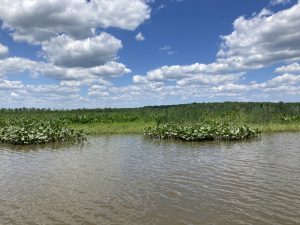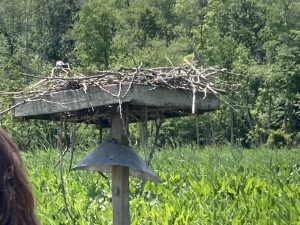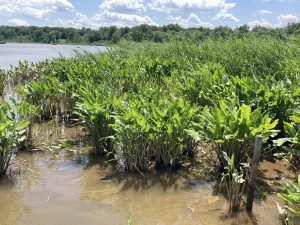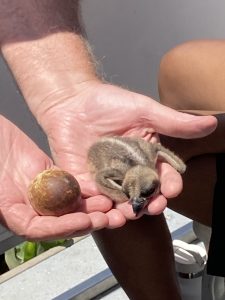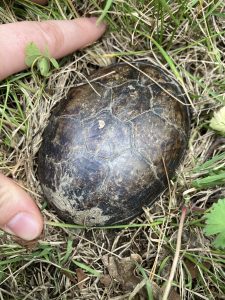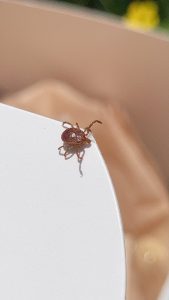Two UW Marine Biology majors chosen as NOAA Hollings Scholars
This year, four students from the UW College of the Environment were chosen as NOAA Hollings Scholars, two of which are studying Marine Biology. Congratulations to Hannah Tucker and Megan Cosand! They shared their experience with us from a trip to the nation’s capital for orientation at the NOAA headquarters. Highly competitive, the NOAA Ernest F. Hollings Undergraduate Scholarship is awarded to just over 100 students each year and supports their studies and paid internships with different NOAA branches across the US. Congratulations also to Michael Han from SAFS and Minda Chen, studying Environmental Engineering.
What did orientation involve?
Hannah
Orientation was on May 27-May 31, with travel to DC on Monday, orientation on Tuesday and Wednesday, field trips on Thursday, then flying home on Friday. It was located at the NOAA Auditorium in Silver Spring Maryland, about 45 minutes north of downtown DC.
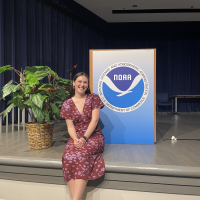
On Tuesday, we heard from NOAA senior leadership and program managers in the morning. Tuesday afternoon and Wednesday morning we heard from different leaders within each of the 6 line offices at NOAA (National Marine Fisheries Service, National Weather Service, National Ocean Service, The Office of Oceanic and Atmospheric Research, National Environmental Satellite, Data, and Information Service, and The Office of Marine and Aviation Operations). Their presentations covered what the office did and how we could get involved during our internships. On Wednesday afternoon there was a career fair where we were able to have 1-on-1 conversations with the presenters and ask specific questions about each program.
Finally, on Thursday the group split up to tour different places that we picked ahead of time (Jug Bay Wetlands Sanctuary, NOAA Center for Weather and Climate Prediction, National Aquarium in Baltimore, NESDIS Satellite Operations Control Center/National Ice Center, or NMFS Systematics Lab). Any time we weren’t at orientation or on the field trips we were free to explore DC and meet other scholars.
Megan
We also learned about Senator Hollings and more about the scholarship, including how we’ll be picking internships, how payments and deadlines will work, plus some admin tasks like getting our photos for ID cards and how to set up our NOAA emails. Scholars were able to get to know each other during a networking dinner and other meal times.
For the field trip, my group went to Jug Bay, a freshwater tidal estuary in the Chesapeake Bay. We learned about different vegetation and bird restoration efforts while kayaking and riding on a pontoon boat around the river. I was particularly interested in the efforts to support growth of wild rice, which is an important source of food for wildlife. One of the main strategies they used was to fence off rice into areas too small for Canada geese to fly into. Otherwise, the geese would graze the rice to the ground. They also research osprey and sora rail. Our tour guide/biologist took us up to an osprey nest platform they built to show us a chick.
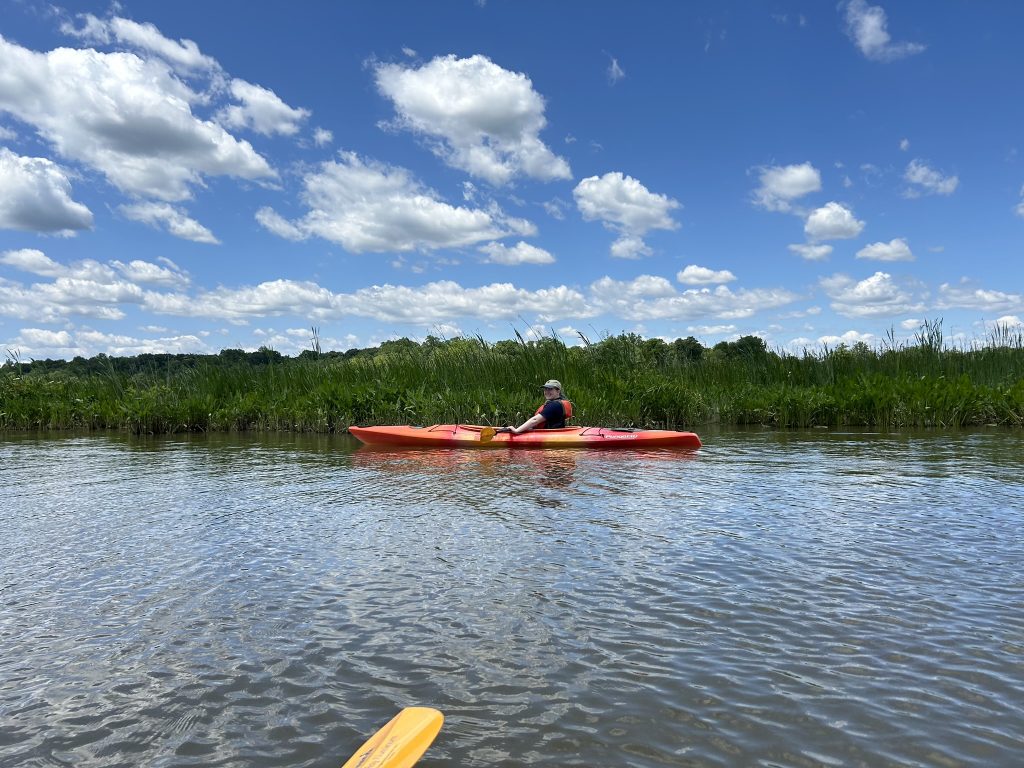
Was there a highlight for you during orientation?
Megan
I liked talking to other scholars. It was fun to interact with people from all over the United States (and territories) and from different majors (earth science, meteorology). I am looking forward to seeing what they’ve been up to at the research symposium where we will reunite at the end of next summer after our 10-week internships.
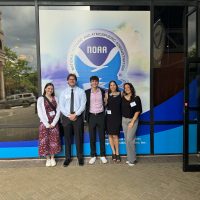
Hannah
My favorite part by far was meeting all the other scholars and making new friends within the program. It was only five days, but I am already such great friends with so many.
Any tips for other students applying for this scholarship?
Hannah
I have two top tips. One is to be open to new opportunities, and second is to lean into NOAA’s mission. One of the common themes within applications from the people who I talked to during the week of orientation was that we all wrote about how we are passionate about science and specific fields, but we hoped that the Hollings program would help us learn about new fields that we were also interested in. Secondly the program is operated out of NOAA, which is a government agency, so it is important to make it clear why you are interested in working with not just the Hollings program but NOAA overall.
Megan
My top tip is to write an essay only you can write. Take some time to think about what you want to get out of the program. Do you want to learn field skills? Be specific and mention which field skills. Demonstrate that your goals align with NOAA’s mission and that you have an understanding of what NOAA does. Avoid generic motivations and cliches and paint a detailed picture that tells what you, specifically, are interested in. UW has a workshop that pairs applicants with grad students to provide feedback on essays, and I found it to be an invaluable opportunity that helped me flesh out and polish my application.
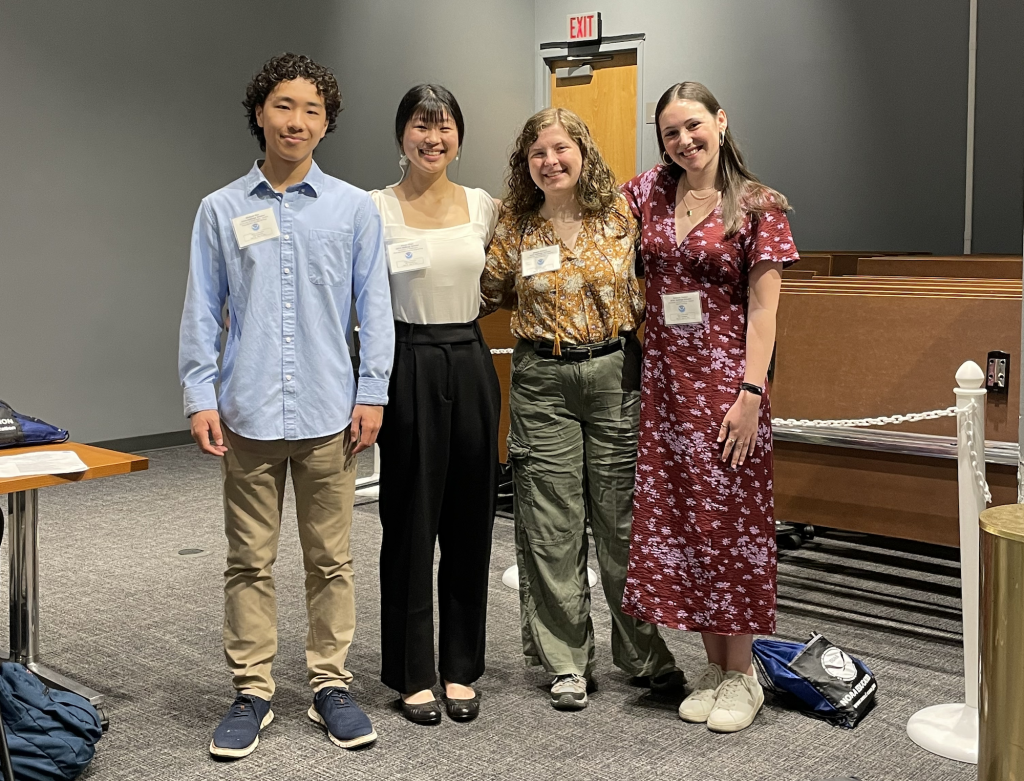
What are the next steps for you in this journey as a NOAA Hollings Scholar?
Megan
As early as October 1st, the database of internship opportunities opens, and we can start reaching out to potential mentors. The internships will be from all over the country. You can pick one that is available, or craft your own project to fit your interests if you can find a mentor to support you. Once we have an internship secured, scholars will have a site visit to inform their final decision. I’m not sure whether I want to find an internship here in the Pacific Northwest so I can start building location-specific expertise and networks or broaden my perspectives by interning somewhere very different.
Any other thoughts you’d like to share?
Hannah
I would really like to encourage all upcoming sophomores with an interest in NOAA’s work to apply. It is such an incredible opportunity, not just for your career but for making connections and friends in the field as well. And even though the application is a haul, the benefits of the program will make it worth your time!
Scroll through Megan Cosand’s fieldtrip photos
- Jug Bay, a freshwater tidal estuary in Chesapeake Bay
- The tour guide/biologist took the group to an osprey nest platform they built to show a chick
- There are efforts underway in this area to support growth of wild rice, which is an important source of food for wildlife
- Scholars learned about different vegetation and bird restoration efforts while kayaking and riding on a pontoon boat around the river
- Mud turtle
- A lone star tick (rare in Seattle!)
